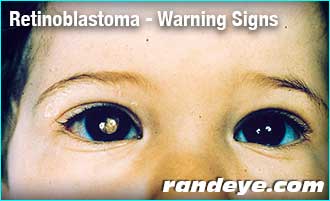Retinoblastoma has been in the news quite a lot lately, but what exactly is it?
Retinoblastoma is a rare type of cancer on the retina (the thin membrane on the inside back of the eye that is stimulated by light). It commonly affects young children, but can rarely occur in adults. Retinoblastoma is usually diagnosed before a child reaches the age of 3.
Retinoblastoma can be hereditary or non-hereditary.
- Forty percent of retinoblastoma patients have a genetic defect that leads to multiple tumors in one eye or both eyes.
- Patients with hereditary retinoblastoma may pass this disease to their children.
- Throughout their lives, patients with hereditary retinoblastoma are more likely to develop other cancers inside and outside of their eyes.
- Sixty percent of patients have the nonhereditary form of retinoblastoma. Each of these patients develops a tumor in only one eye.
What to look out for?
- “Cat’s eye”-a white-yellow mass or glow seen through the pupil
- Complaints of poor vision
- One or both eyes turning inward or outward
- Pain from increased pressure in the eye as the tumor grows
So Why Is Retinoblastoma Making the News?
Many parents are turning to their cameras to help them detect Retinoblastoma early! A life saving snapshot helped an Illinois mother discover her 2-year-old had this cancer.
“I took a picture and I did not want to take the picture because I had this dreaded feeling in the pit of my stomach and I took the picture and boom. His whole pupil was just white and that’s when I knew,” Julie says.
A bright white spot or reflection in the pupil can be seen in photographs where the flash has been used.
So next time you pop up the flash on your camera, check your subjects for red eye (turn off any red eye removal settings your camera may have). If the typical red spot is only present in one pupil, or if the pupil is white, that could be a sign!

